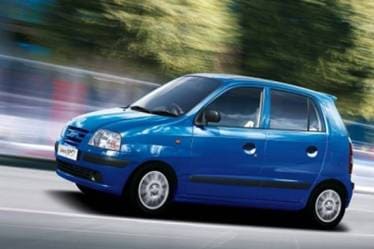What does it take for a foreign car-maker to succeed in a monopolistic and government-regulated market, especially when the challenger has no brand value to speak of before its intended audience? In Santro: The Car That Built a Company, author BVR Subbu documents how South Korean Hyundai’s hatchback drove to the top of the seemingly insurmountable peak in India.Subbu was at the forefront of this journey after he moved to the fledgling Hyundai Motors India (HMI) in 1997 as director of sales and marketing, and eventually rose to become president. He started his career at Tata Motors and remained with the company—which was primarily making trucks at the time—before taking the driving seat at HMI. The story has all the makings of a gripping tale—an unknown foreign underdog pitched against an overwhelming domestic rival in Maruti Udyog Limited (MUL), reminiscent of the David versus Goliath tale. The early chapters capture the vice-like grip MUL had over consumers, owed in large part to government largesse in terms of policy support received in an otherwise heavily-regulated sector.
Even though India went through a phase of liberalisation in the early Nineties, by all accounts, the exercise remained unfulfilled, as government control across sectors has continued. This, as the book recounts, led to several missed opportunities for the introduction of world-class automotive technology in the country and created conditions for technologically sub-standard monopolist MUL to earn profits hand-over-fist at the cost of consumers. This is a common view that readers would be able to identify with and relate to, as it exists in many sectors even today. The skewed free-market economy has undeniably hurt domestic consumers by denying them competition among manufacturers that leads to availability of choices and lower costs. To its credit, the leadership team at HMI knew what it took to bring down the giant. What it lacked in size and recognition, it made up through nimble decision-making and common sense. The author points to the consultant-driven approach of foreign biggies—Ford, GM, and the Japanese Toyota and Honda—which ensured that these companies remained on the margins of the Indian market and were happy to feed on the scraps left behind by MUL.
Subbu goes on to illustrate the common sense employed in making the ‘Tall Boy’—another name for Santro derived from its unusual design—an acceptable purchase for domestic consumers. For starters, HMI, unlike other foreign players, decided to locally procure as many components as possible instead of relying on imports, which gave it the cost advantage to compete with the incumbent. Further, they imitated MUL in several aspects of its strategy, but did it better and more efficiently than the leader. The results were spectacular. Not only did Hyundai manage to sell a million Santros in the shortest time for a car in its segment, it became profitable from the very first year of full operations. A year after its launch in 1999, it faced strong competition from Tata Motors’ Indica, but it managed to grow its customer base, as Indica found favour mostly in the taxi market.
Subbu’s prose is exciting and revealing, but, admittedly, more interesting for car enthusiasts or those who track the sector closely. For a general reader, the many details may feel like diversions from the narrative. Nevertheless, the book has a refreshing candour and pulls no punches while talking about some of the dubious practices in the industry.
Even though no blood was spilled while winning the hatchback war, the book has a distinct combative tone of a hard-fought battle. Every chapter is titled with reference to ‘war’ in it, which may seem overdone after a point. It is possible that readers of a particular political persuasion would appreciate heavy doses of Mao Tse-Tung’s quotes that impart wisdom on war strategies, but the same could leave others uneasy about the cultural acceptance of quoting a man widely held responsible for killing over 40 million of his countrymen. But that could be attributed to the enduring influence of the author’s alma mater, JNU!
